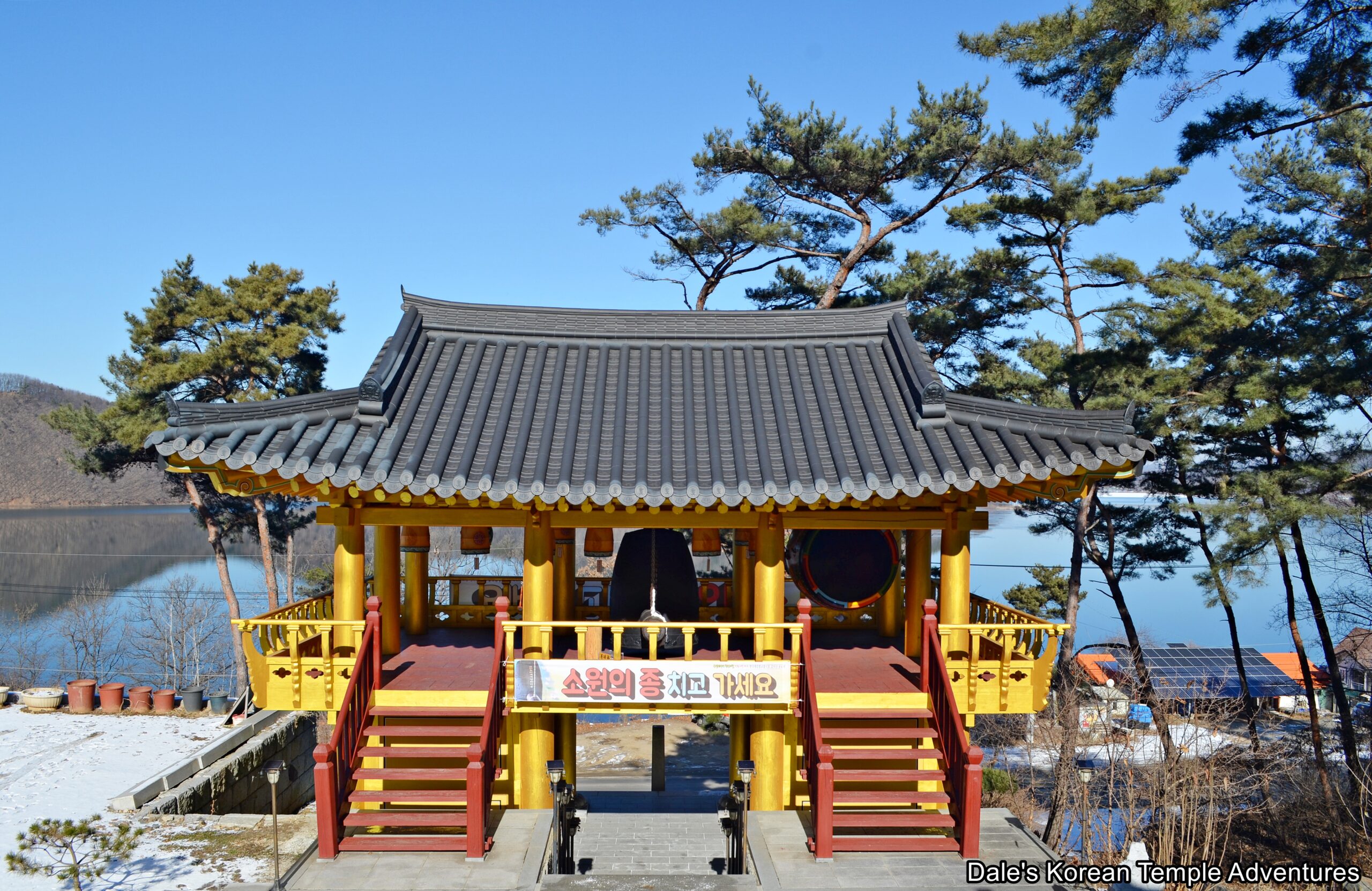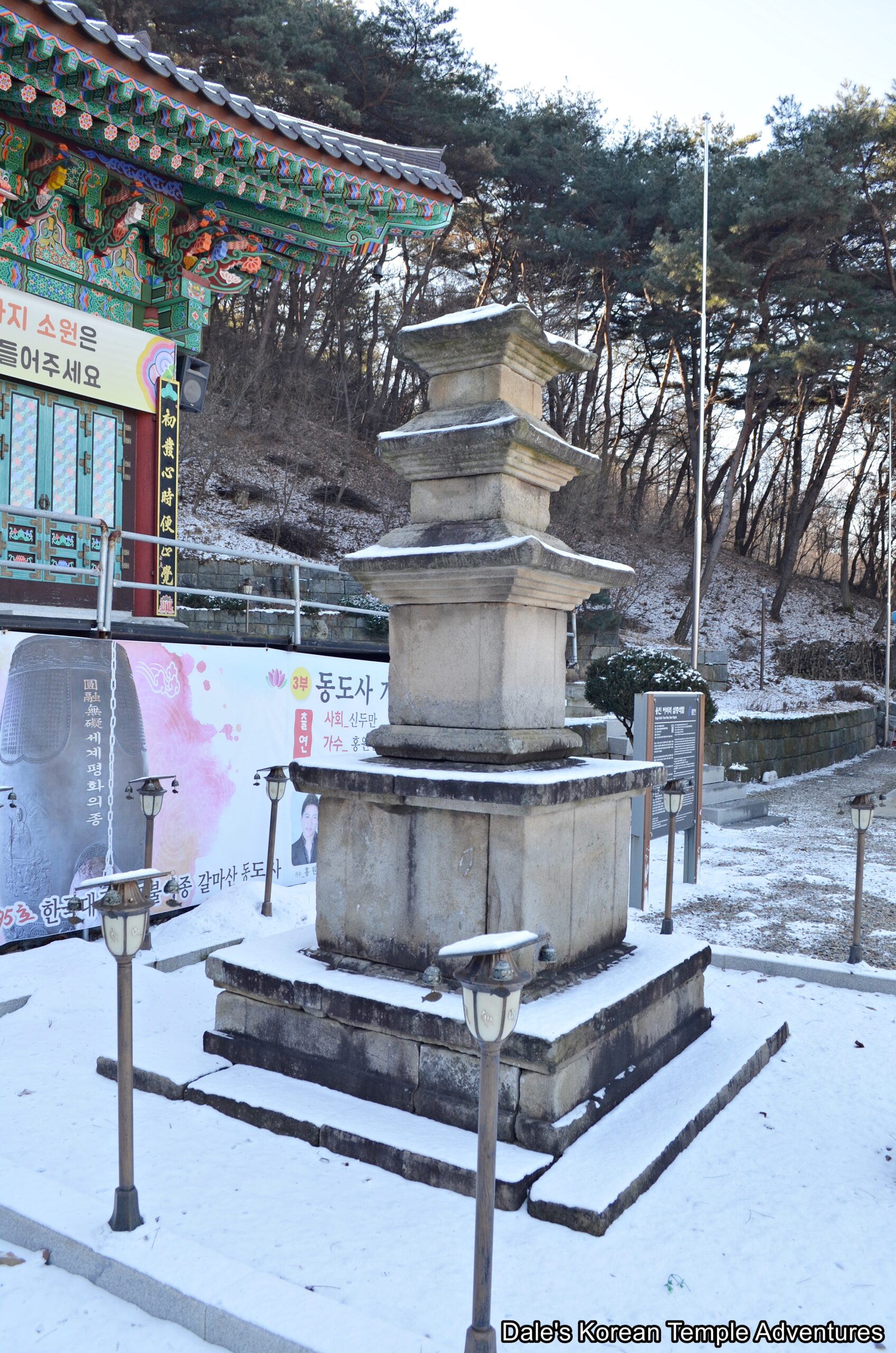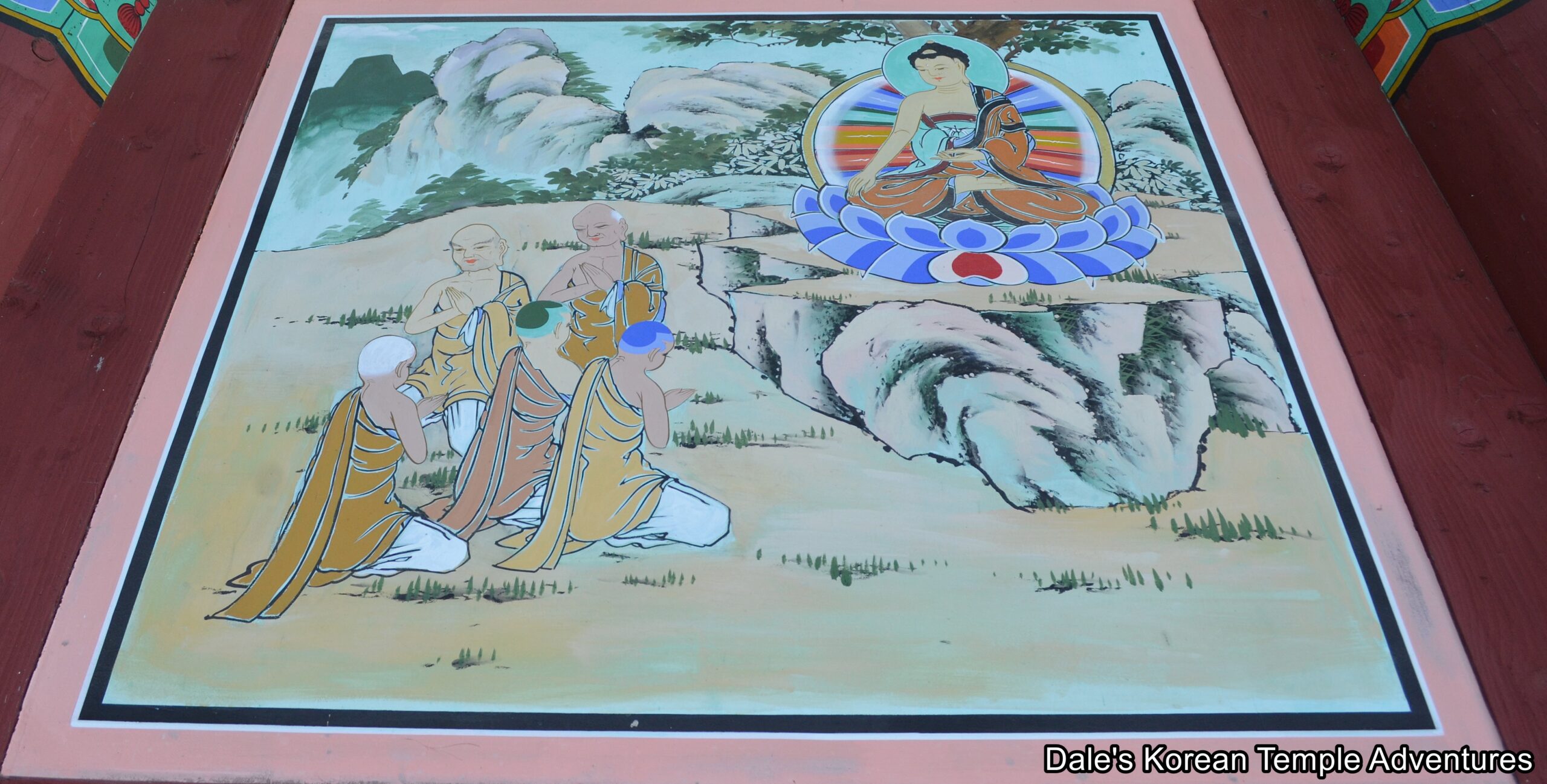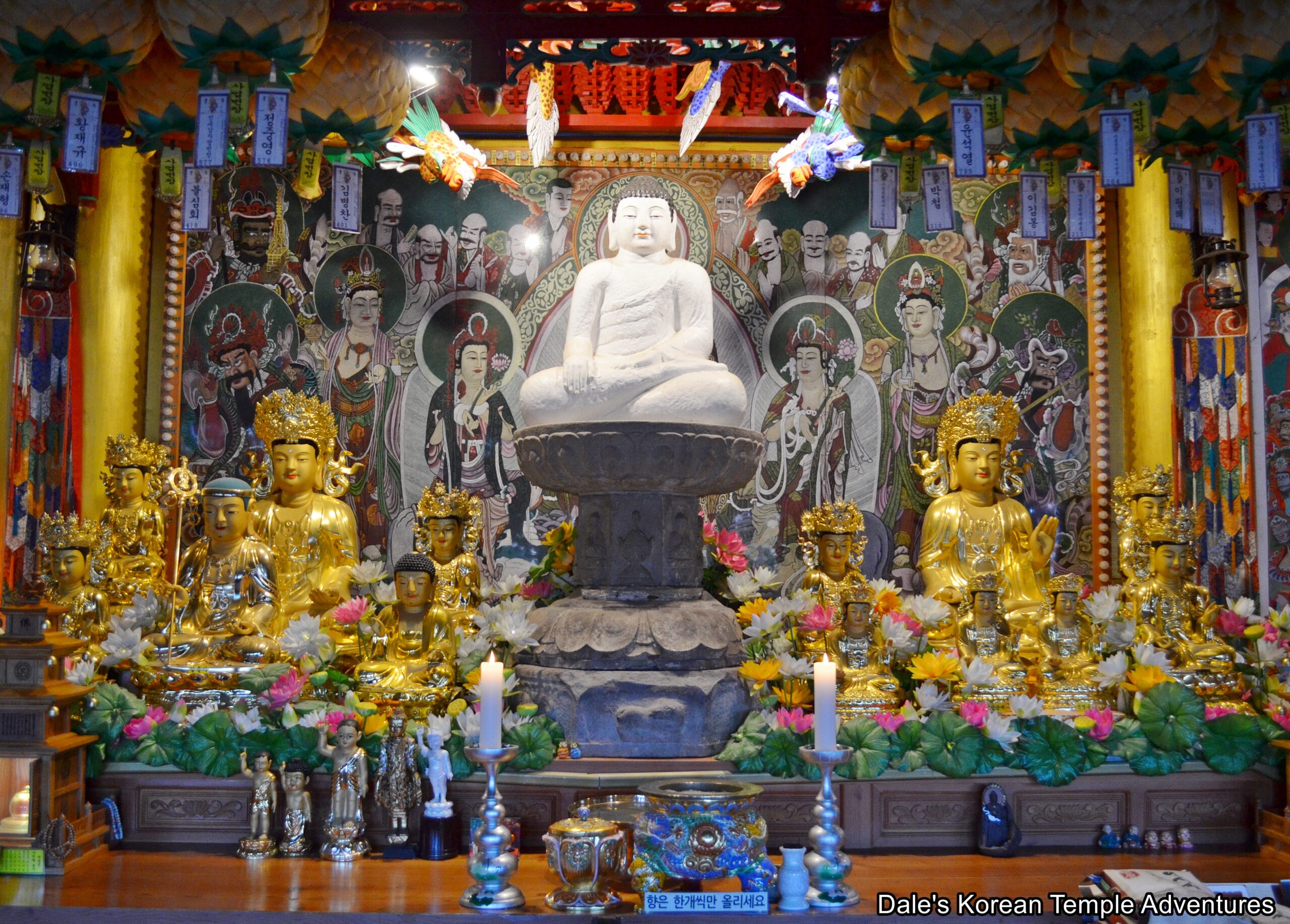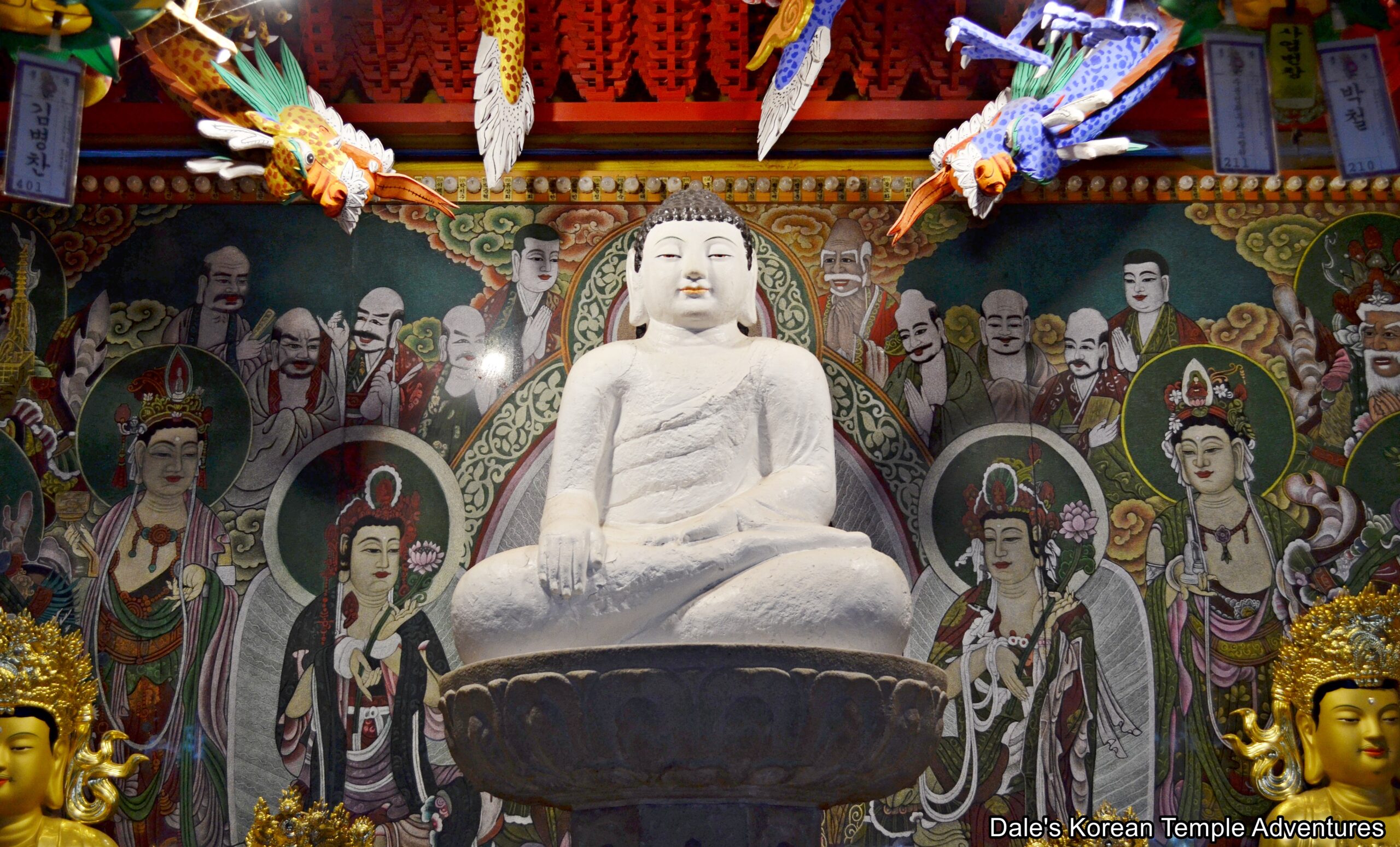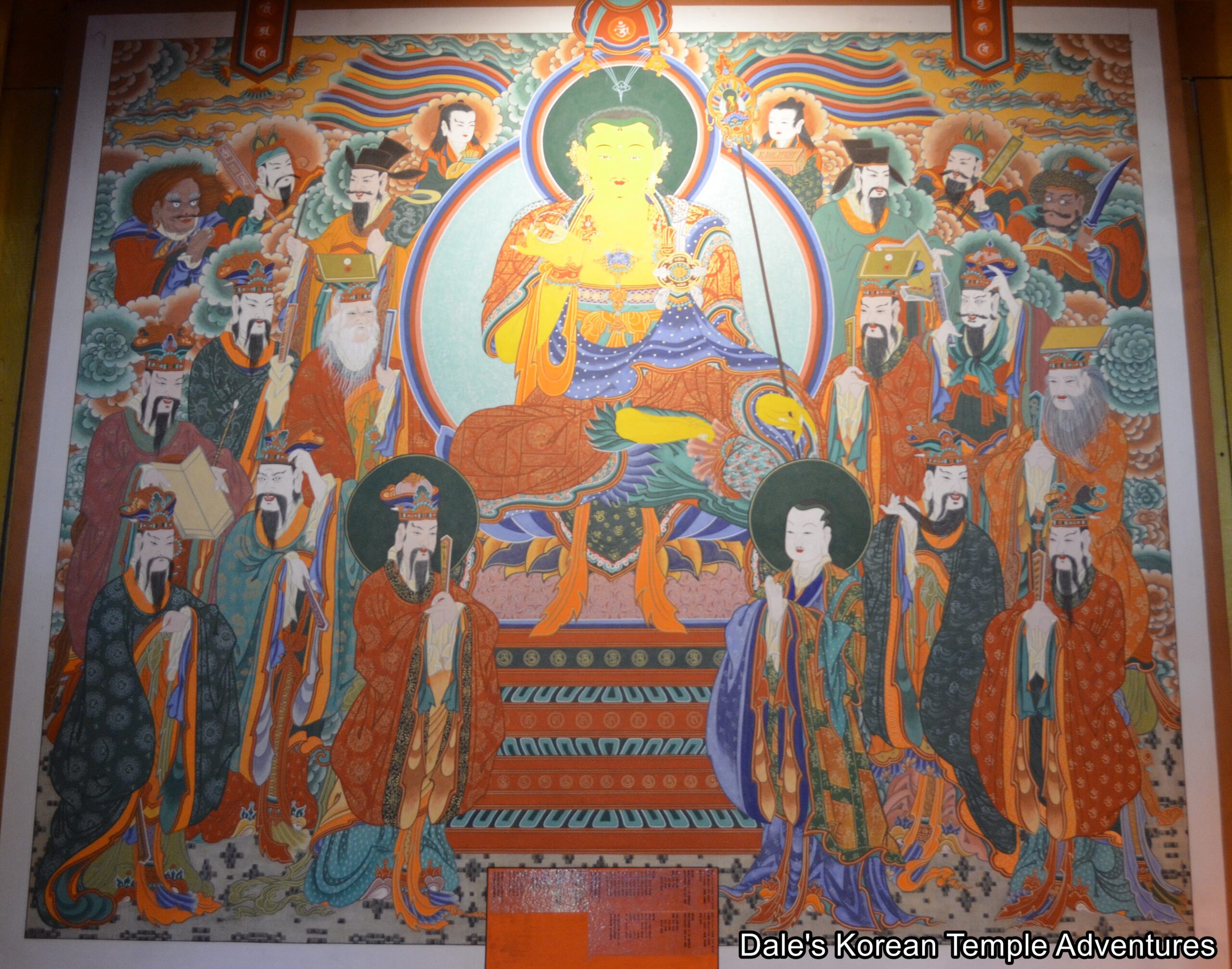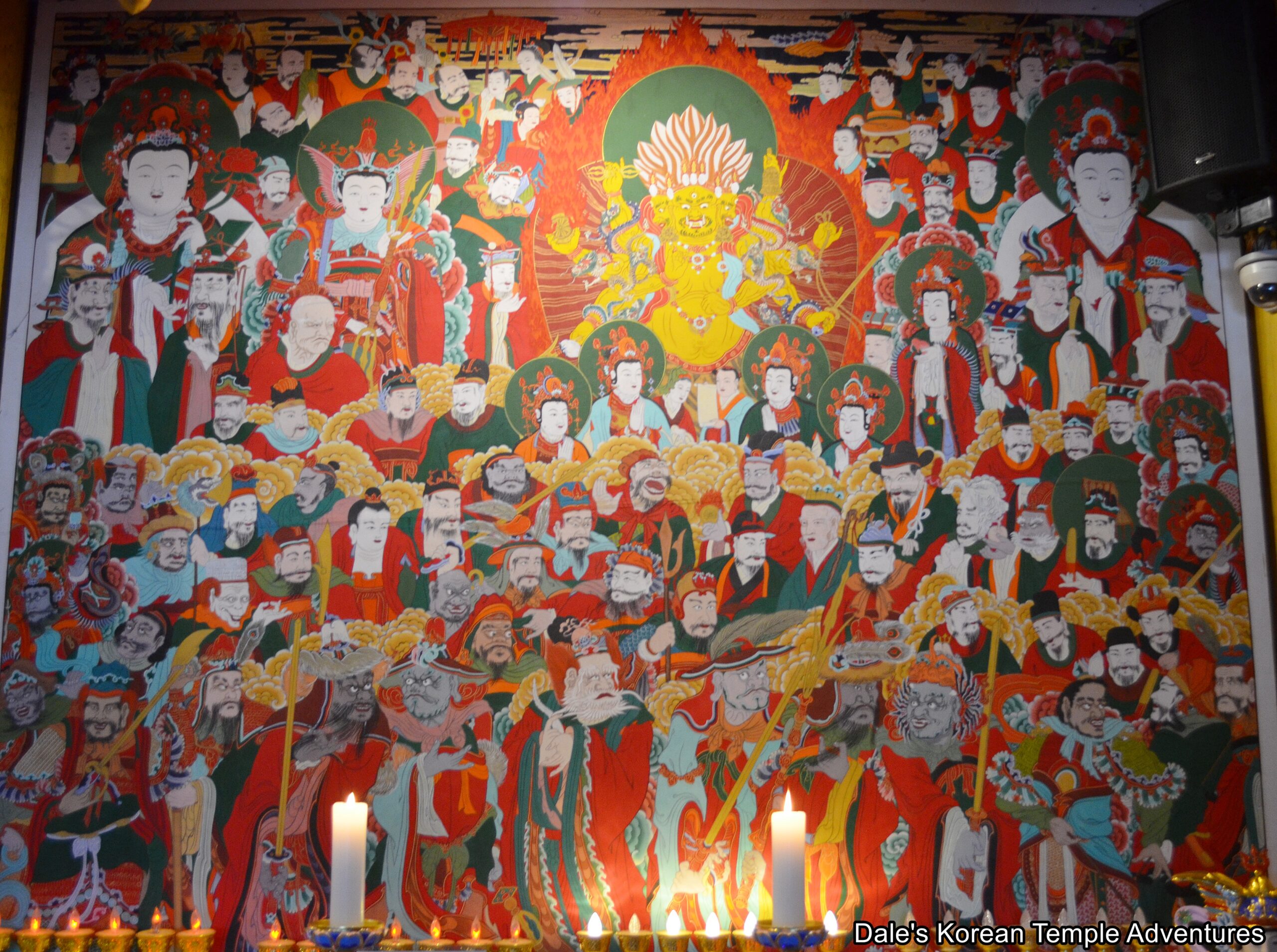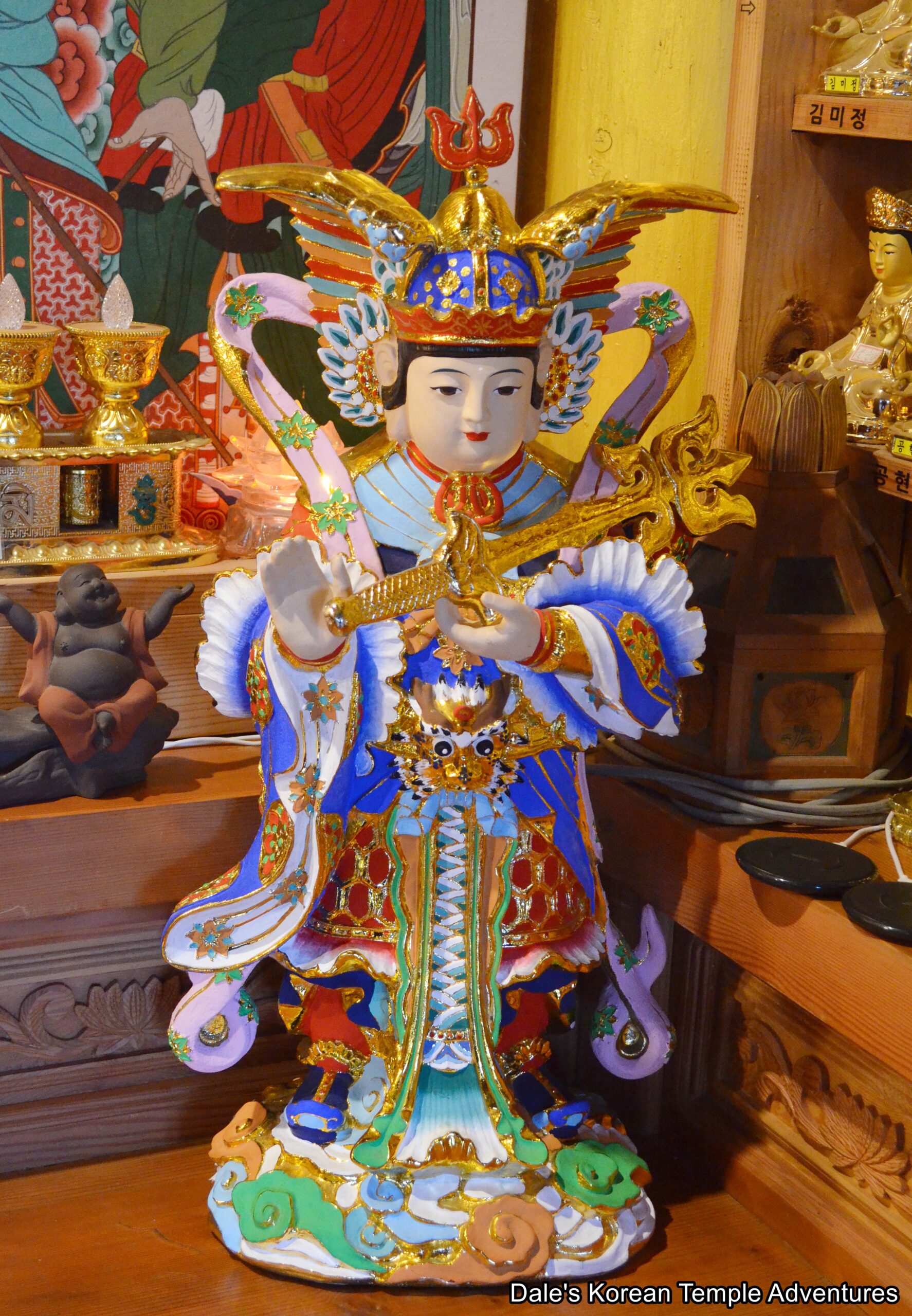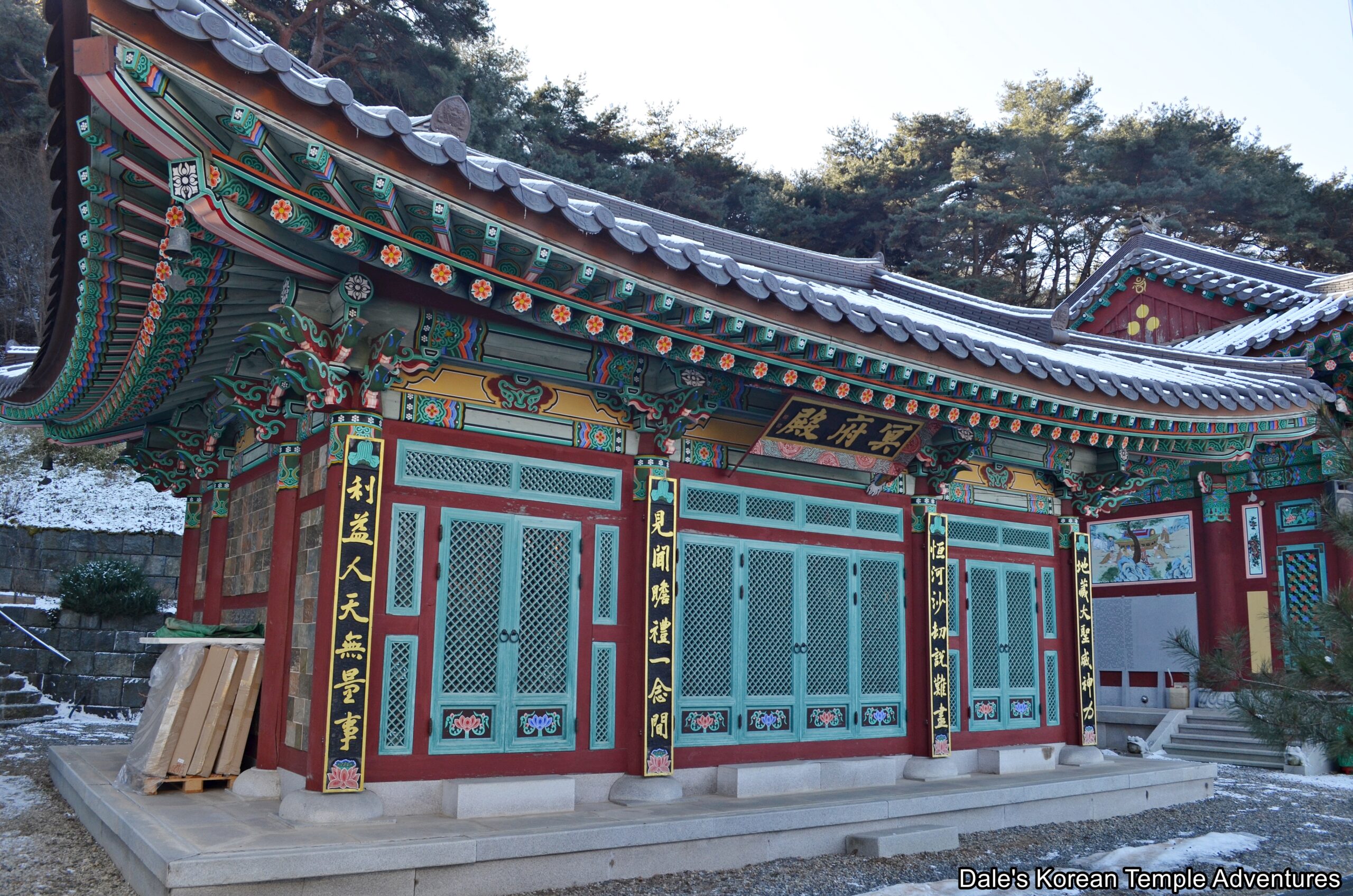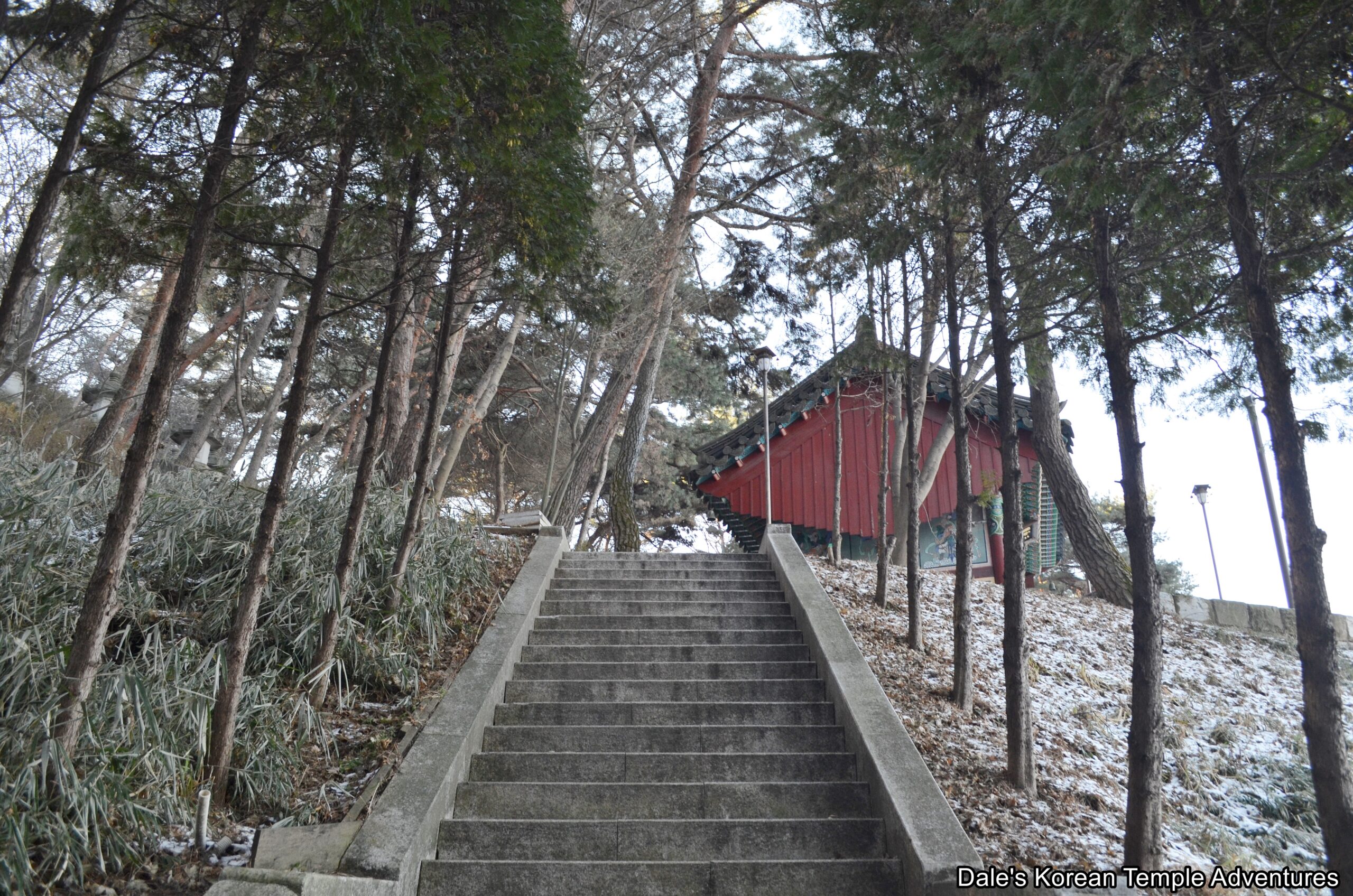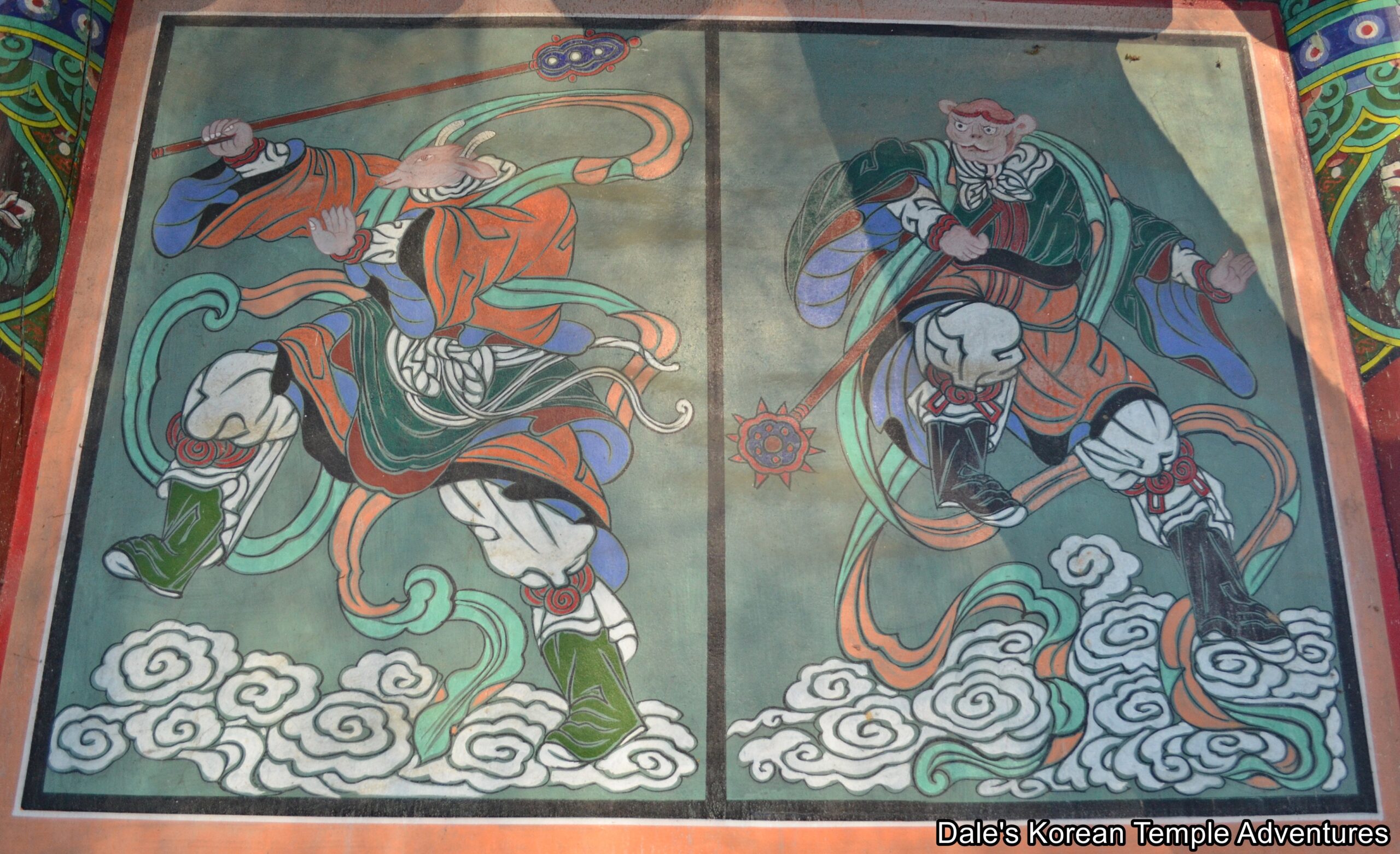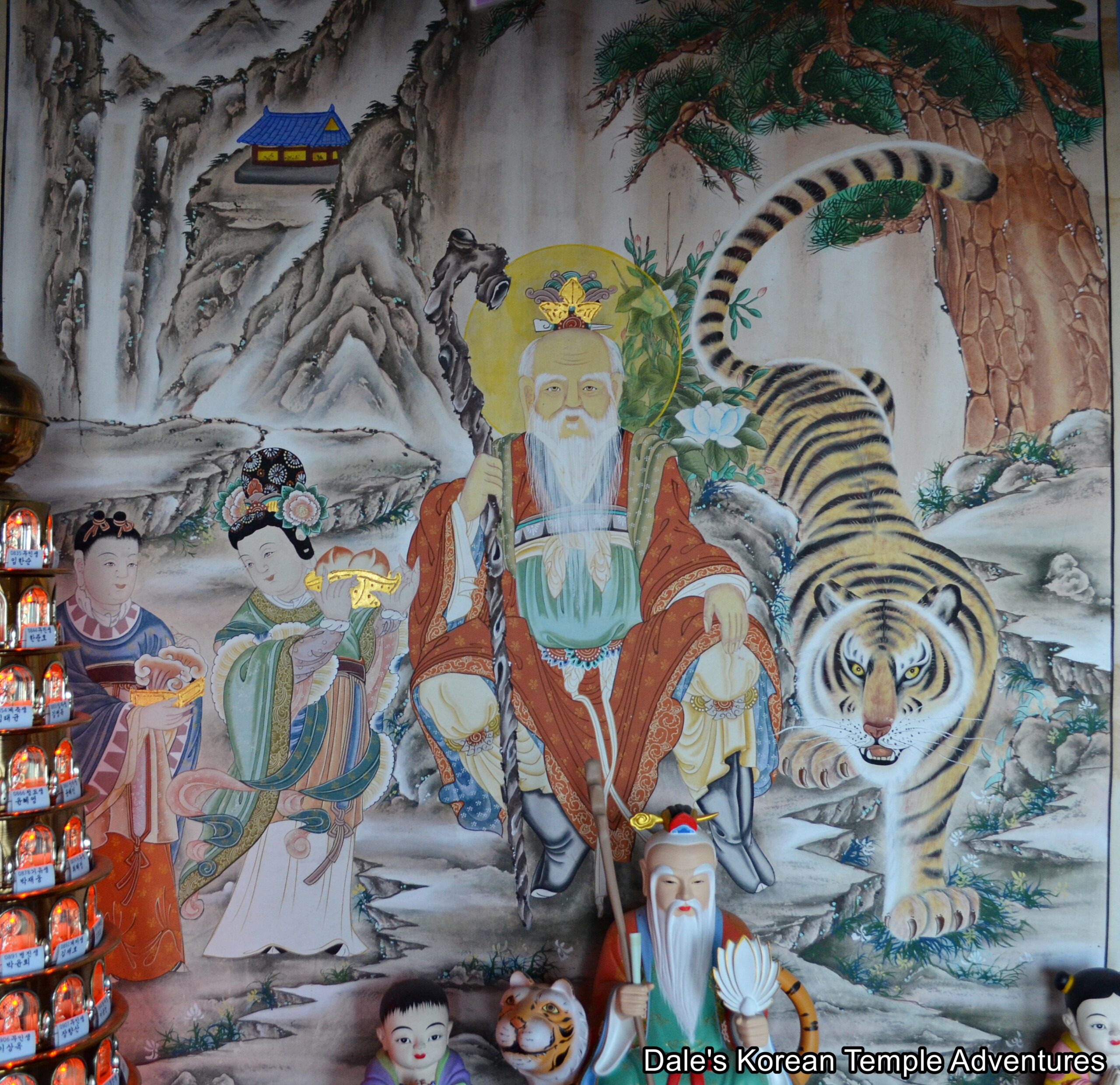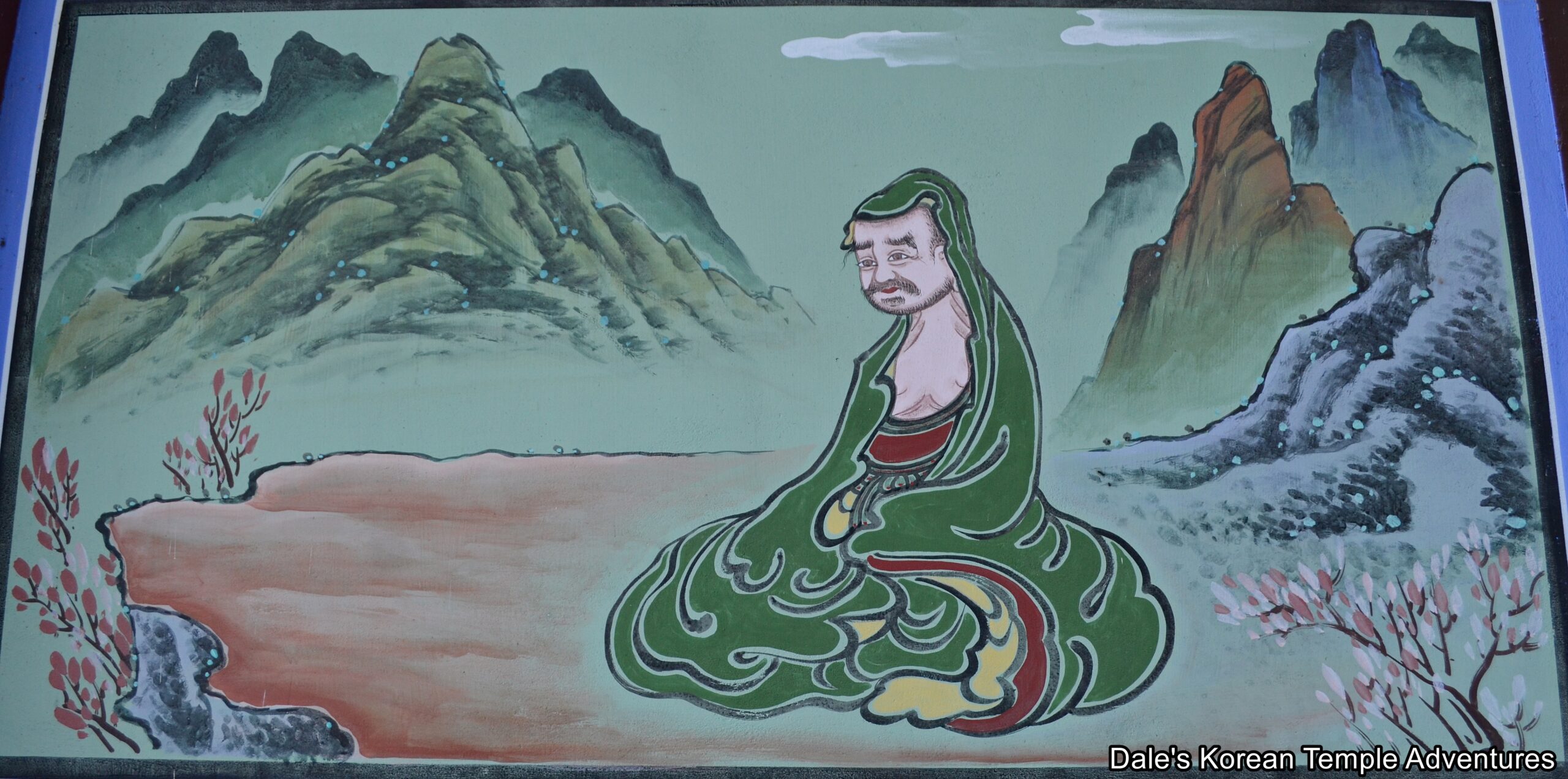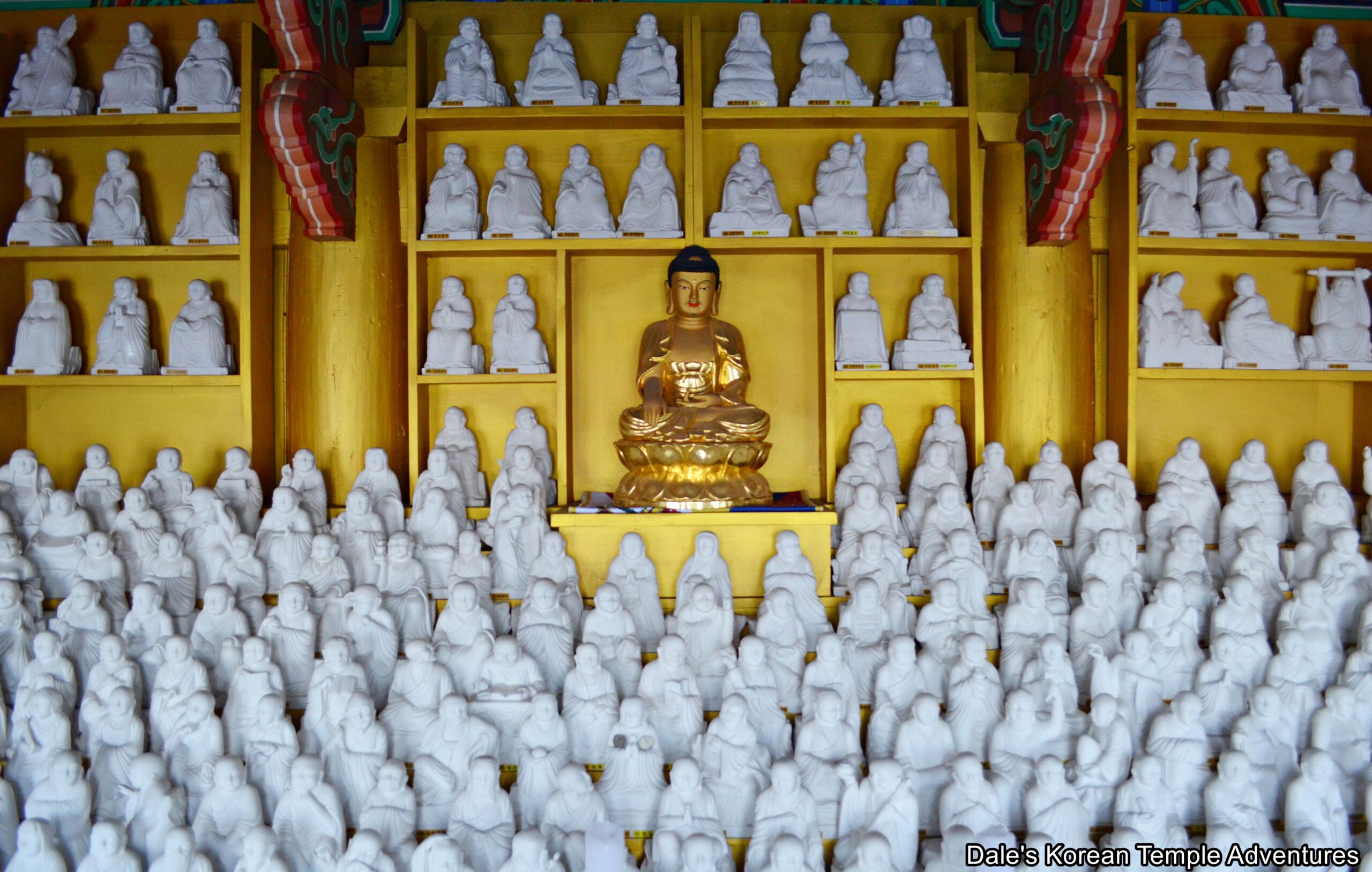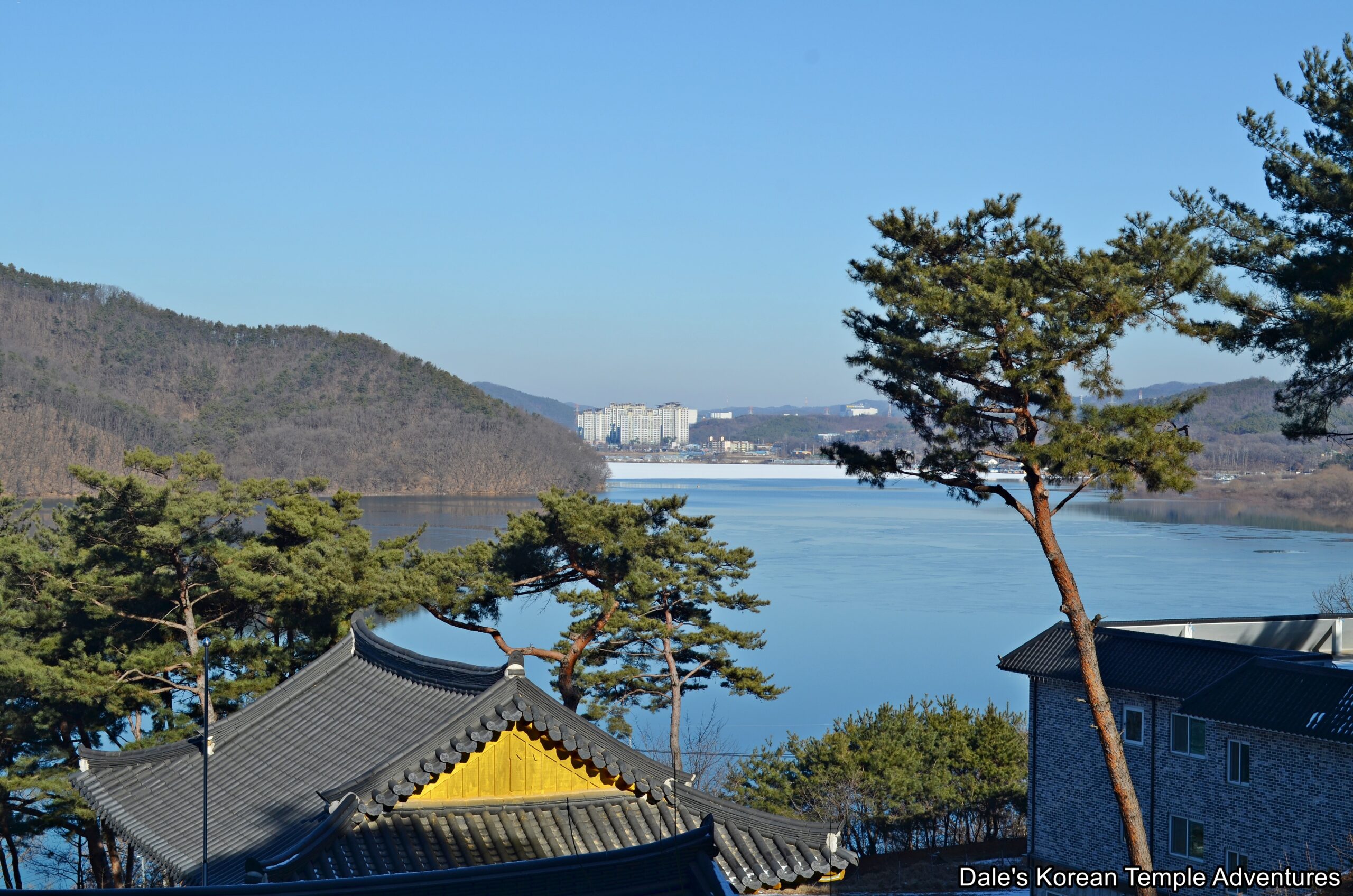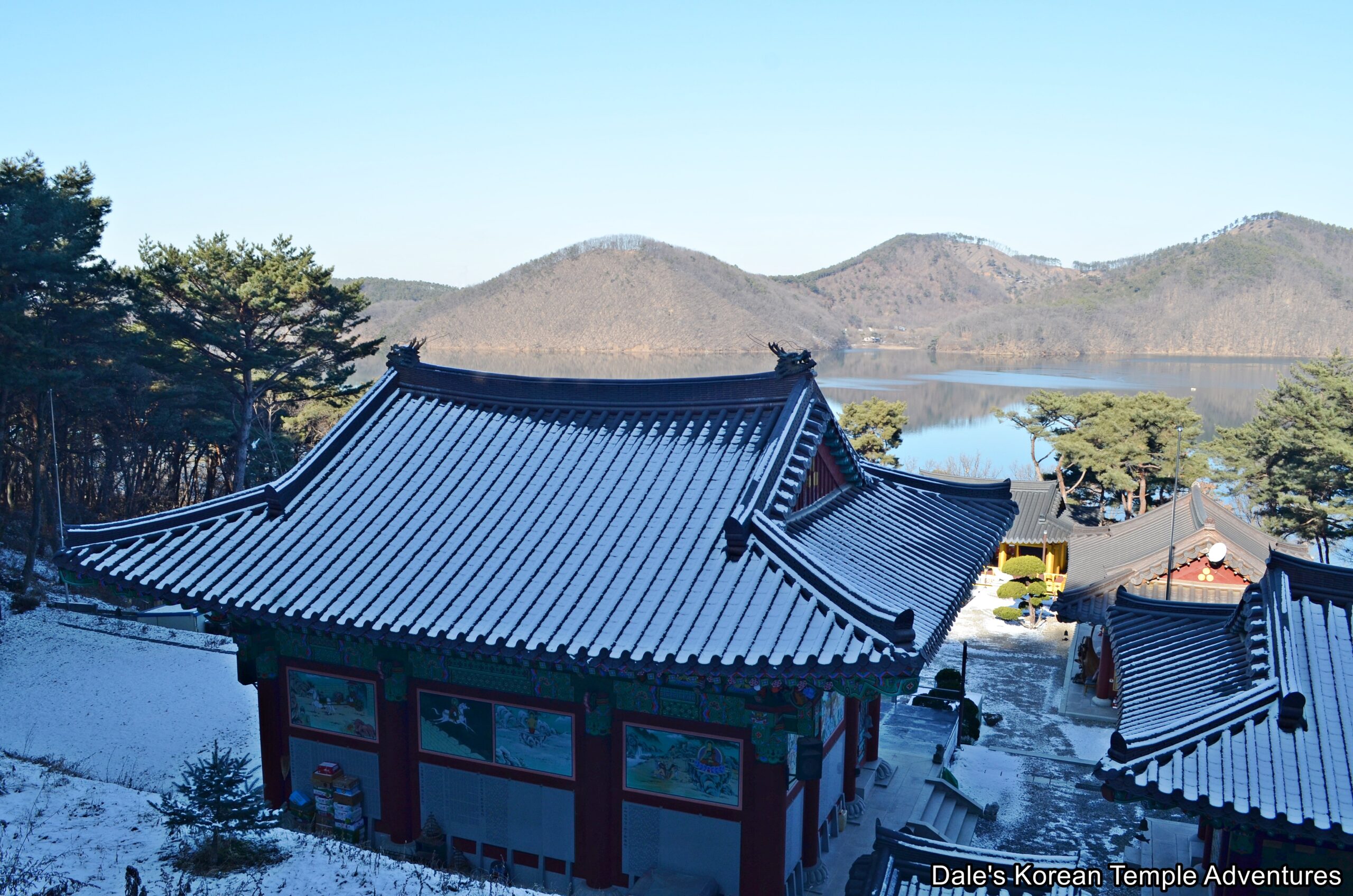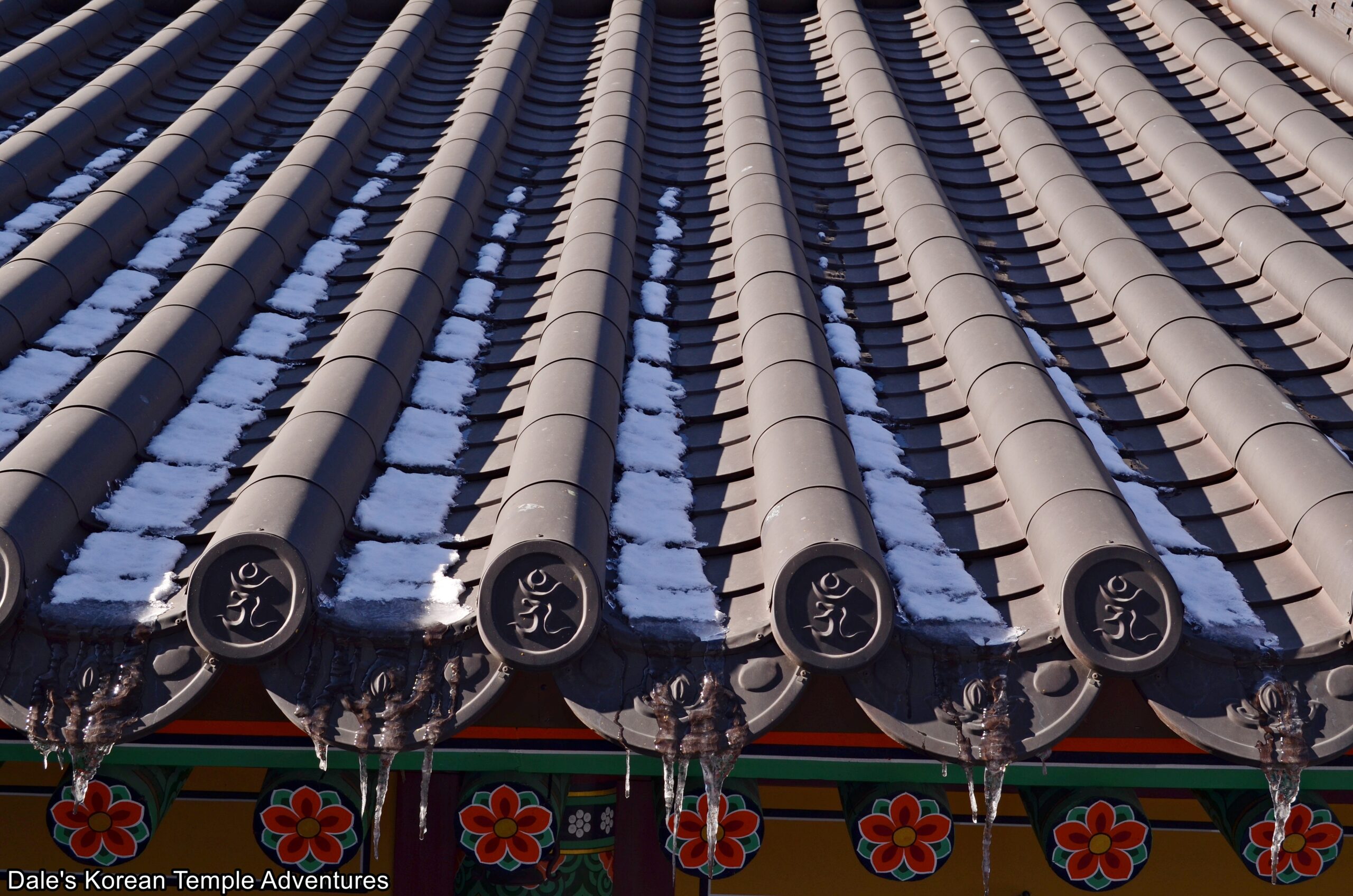Dongdosa Temple – 동도사 (Yongin, Gyeonggi-do)
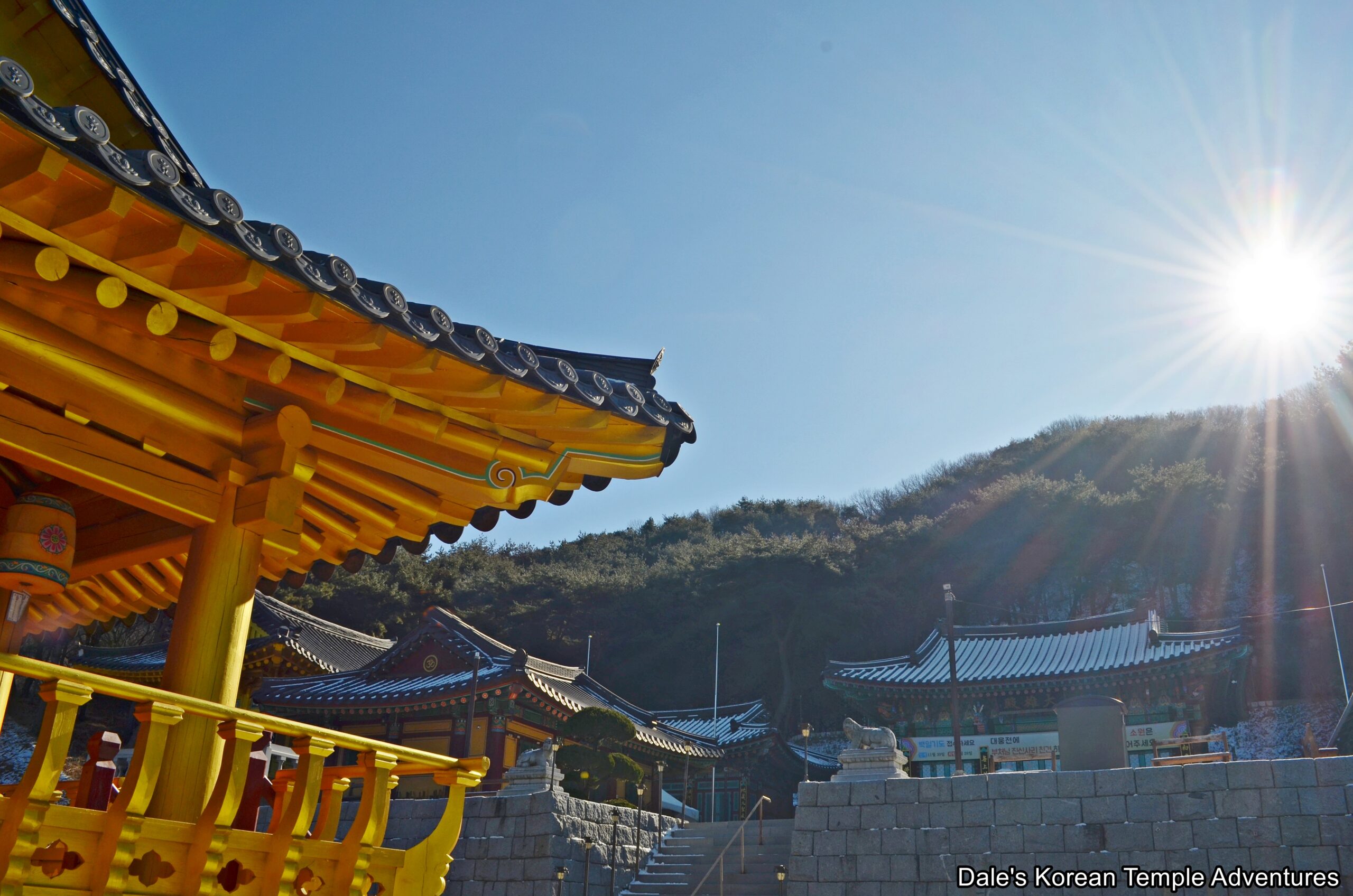
Temple History
Dongdosa Temple is located in the southern part of Yongin, Gyeonggi-do in the northern foothills of Mt. Geomeunsan. The north side of the temple faces directly out onto the Idong Reservoir. Dongdosa Temple is a modern temple with a long history. That might sound a bit paradoxical; but in a bit, hopefully, it’ll make a bit more sense. When the neighbouring Eubirisa Temple was submerged in water after the construction of the Idong Reservoir in 1963, the temple was moved to the Dongdosa Temple location. With this move, a few of Eubirisa Temple’s artifacts moved to their new location. These artifacts included items like the “Three-Story Stone Pagoda of Eobi-ri,” and the “Dongdosa Temple Seated Stone Statue of the Buddha.”
With all this in mind, Dongdosa Temple was first built in 1963, and it belongs to the Taego-jong Order, which is the second largest Buddhist Order in Korea. So Dongdosa Temple is a place where both and new and old meet in the southern part of the city of Yongin.
In total, Dongdosa Temple is home to a Tangible Cultural Heritage, which is the “Three-Story Stone Pagoda of Eobi-ri.”
Temple Layout
You first make your way up to the elevated temple grounds from a road that skirts the southern part of the Idong Reservoir. Mounting a long set of stairs, you’ll come to a two-story, golden structure. The first story acts as the Cheonwangmun Gate, while the second story acts as the temple’s Jong-ru Pavilion. The first story has a set of four smaller sized statues dedicated to the Four Heavenly Kings. The interior of this gate is also filled with smaller sized statues of golden Buddhas. Climbing the final set of stairs and looking back, you’ll notice the four traditional Buddhist percussion instruments inside the second story of the structure.
Turning around, you’ll now be standing squarely in the main temple courtyard at Dongdosa Temple. To your right is the administrative offices at the temple, while to the left are the monks dorms. And straight ahead of you is the Daeung-jeon Hall. Out in front of the Daeung-jeon Hall in the courtyard below the main hall, you’ll find an older stone lantern backed by the “Three-Story Stone Pagoda of Eobi-ri.” This is the very same pagoda that was moved from its former location at Eubirisa Temple. The stone pagoda consists of a two-layer stylobate topped by the base of the pagoda. Above this base are the three stories of the pagoda. Unfortunately, the finial to the pagoda is missing. It’s believed that this pagoda was constructed at the start of the Goryeo Dynasty (918-1392), while also exhibiting the style of Unified Silla (668-935 A.D.).
Above the “Three-Story Stone Pagoda of Eobi-ri,” you’ll find the backing Daeung-jeon Hall. The front floral latticework is stunning, and the exterior walls are adorned in a simplistic set of Palsang-do (The Eight Scenes from the Buddha’s Life). Stepping inside the Daeung-jeon Hall, you’ll find a crowded main altar with an elevated image of a white Buddha statue. This is the “Dongdosa Temple Seated Stone Statue of the Buddha.” The statue, like the accompanying pagoda that was moved to its present location in 1963, is believed to have first been made at the start of the Goryeo Dynasty, while maintaining the style of Unified Silla. Joining this central image on the main altar are thirteen additional statues that include Amita-bul (The Buddha of the Western Paradise), Jijang-bosal (The Bodhisattva of the Afterlife), Gwanseeum-bosal (The Bodhisattva of Compassion) and several others. To the left of the main altar is a modern mural dedicated to Jijang-bosal. To the right of the main altar is another modern mural; this time, of a Shinjung Taenghwa (Guardian Mural). And in front of this mural is a vibrant statuette dedicated to Dongjin-bosal (The Bodhisattva that Protects the Buddha’s Teachings).
To the left of the Daeung-jeon Hall are a pair of shrine halls that contain the earthly remains of the dead. To the rear of these halls are a pair of temple shrine halls that are situated up a set of concrete stairs. The first of the two, and situated to the left, is the Samseong-gak Hall. The exterior walls to this shaman shrine hall are adorned with the Sibiji-shin (The Twelve Spirit Generals). Stepping inside the Samseong-gak Hall, you’ll find a triad of paintings on the main altar. These are dedicated to Sanshin (The Mountain Spirit) to the left, Dokseong (The Lonely Saint) to the right, with an image dedicated to Chilseong (The Seven Stars) in the centre.
To the right of the Samseong-gak Hall, you’ll find the Nahan-jeon Hall. The exterior walls to this shrine hall are adorned with various murals dedicated to the Nahan (The Historical Disciples of the Buddha). Stepping inside the Nahan-jeon Hall, you’ll find a solitary, golden image dedicated to Seokgamoni-bul (The Historical Buddha) on the main altar. This central image is joined on all sides by numerous, white statues of the Nahan. From both the Samseong-gak Hall and the Nahan-jeon Hall, you get a beautiful view of the Idong Reservoir off in the distance.
How To Get There
From the Yongin Bus Terminal, you’ll need to take Bus #22-1 to get to Dongdosa Temple. You’ll need to take this bus for 40 stops, or 33 minutes, and get off at the “Jangseo 2-ri, Gyohoe hacha – 장성2리, 교회 하차” stop. From where the bus drops you off, you’ll need to head west up “Eojin-ro – 어진로” road for 1.5 km, or 23 minutes, until you get to Dongdosa Temple.
Overall Rating: 6/10
Some of the highlights at Dongdosa Temple include the main altar inside the Daeung-jeon Hall with its numerous statues and the central “Dongdosa Temple Seated Stone Statue of the Buddha.” Also things to keep an eye out for are the murals inside the Samseong-gak Hall and all the Nahan statues inside the Nahan-jeon Hall, as well as the golden Cheongwangmun Gate/Jong-ru Pavilion. And to top it all off is the amazing view out towards the neighbouring Idong Reservoir.
